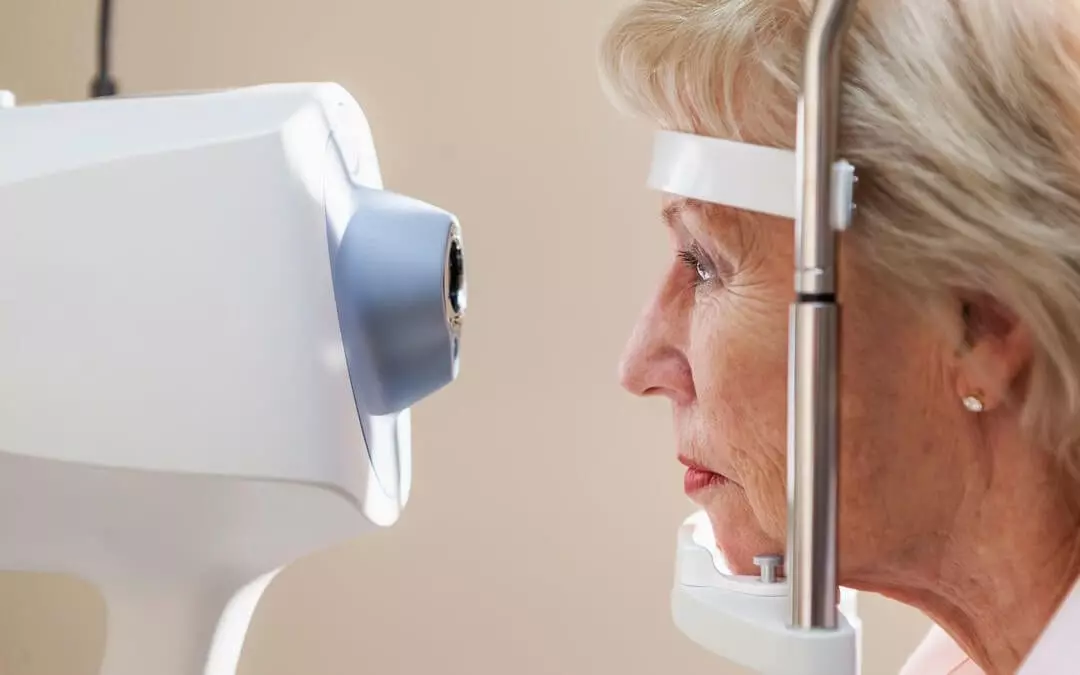As you’ve aged, you’ve noticed that your eyes feel sore and tired more easily than normal. Maybe you’ve felt some slight pressure behind your eyes that doesn’t go away. Or perhaps your vision has started to blur gradually. Whatever the case, you know you should have your eyes checked to prevent more serious issues.
When you visit your eye doctor, he or she usually examines your eyes and tells you about your overall eye health. But during a visit, he or she may have mentioned that you are at risk for developing glaucoma.
You’ve heard about this eye condition, but you still don’t know as much about it as you’d like. Below, we’ll walk you through glaucoma: what it is, what its symptoms are, and how an eye doctor can help you cope should you ever develop it.
What Is Glaucoma?
Simply put, glaucoma refers to a condition in your eye that can cause damage to your optic nerve. The optic nerve transmits images from your retina to your brain so you can see properly. Glaucoma develops as a result of fluid and pressure buildup behind your eye.
The resulting damage interferes with your ability to see correctly. In fact, the American Academy of Ophthalmology states that not only is this condition the second leading cause of blindness in the US, but it is also the leading cause of blindness in individuals 60 years old and above.
The condition develops rather slowly, so even if you have glaucoma, you may not notice any of the symptoms immediately. However, the sooner you begin treating the condition, the lower your chances are of becoming blind later on.
Additionally, there are several different kinds of glaucoma you could develop. These types include:
- Open-angle glaucoma
- Congenital glaucoma
- Glaucoma suspect
- Secondary glaucoma
- Closed-angle glaucoma
- Normal-tension glaucoma
Open-angle glaucoma is the most common form found in adults. And unfortunately, it is one of the more difficult forms to treat—especially because most people who have this condition don’t have high eye pressure when they have their eyes examined initially.
What Are the Symptoms of Glaucoma?
Regardless of which form of glaucoma you are at risk for, the condition still manifests similar symptoms. As you care for your eyes, take note of any of the following symptoms:
- Suddenly blurry vision
- Blank spots on your peripheral vision
- Pressure behind the front part of your eye
- Headaches
- Nausea
- Vomiting
- Severe eye pain
- Halos around lights
- Tunnel vision
- Red eyes
Additionally, individuals with glaucoma may have hazy eyes. This symptom is particularly prominent in children, but adults can still manifest it. If you’ve noticed any of the above symptoms, make an appointment with your eye doctor as soon as possible.
How Can an Ophthalmologist Diagnose This Condition?
Once you meet with your ophthalmologist, he or she will perform a few different tests and use various tools to diagnose the condition.
Pachymeter
This tool measures your central corneal thickness (CCT). Your eye doctor will anesthetize your eyes before the procedure begins. Then, he or she will place a probe perpendicular to your cornea. The probe will then measure your CCT and evaluate your intraocular pressure (IOP) levels. If you have a thin CCT and high IOP levels, you are more at risk for developing—or may already have—glaucoma.
Tonometer
The tonometer is a tool that also measures your eye’s pressure. Your eye doctor will also use a numbing agent (usually a drop) to anesthetize your eye. Your head and chin rest on a support while a slit-lamp shines in your eye. This lamp allows your ophthalmologist to see a magnified view of your eye. You’ve likely had this tool used on you if you’ve had an eye exam before.
He or she may even perform a gonioscopy, opthalmoscopy, or visual field test to further examine your vision and determine the severity of your glaucoma.
Your eye doctor may even use new imaging technology to examine and evaluate your optic nerve. These images let your eye doctor review your eye over a period of time to determine how quickly or slowly your class of glaucoma is progressing.
What Kinds of Treatment Are Available?
Unfortunately, there is no cure for glaucoma. However, there are several kinds of effective treatments available. The kind of treatment your eye doctor prescribes depends entirely on which type of glaucoma you have and how severe it is.
Typically, your eye doctor will prescribe glaucoma medication (usually in the form of medicated eye drops). The medication lowers your IOP either by reducing the fluid buildup in your eye or by helping the fluid flow out of your drainage angle better. Your ophthalmologist may even recommend the following surgeries to treat your glaucoma:
- Laser iridotomy
- Laser trabeculoplasty
- Peripheral iridectomy
- Aqueous shunt surgery
- Trabeculectomy
Your eye doctor will only recommend these treatment options if medicated drops won’t reduce the symptoms.
If you’ve manifested any of the symptoms listed above, get in touch with your ophthalmologist as soon as possible. He or she can perform some of the exams discussed above to determine if you do have glaucoma. Additionally, he or she can provide you with effective treatment to help you manage the condition so you can see better and live a life with little or no symptoms.
Remember, to keep your eyes healthy and to prevent serious eye issues from developing too far, you should see your eye doctor regularly. Schedule a routine eye exam with you eye doctor so he or she can diagnose any eye issues and treat these problems in a timely manner. Your ophthalmologist can also provide you with additional tips you need to maintain good eye health over your lifetime.

